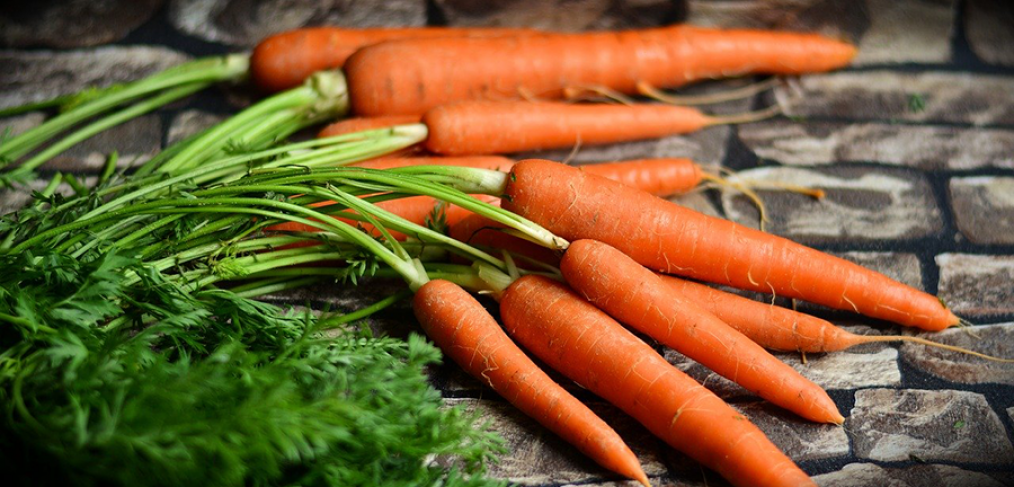
Everything You Wanted to Know About Carrots

Carrots are often hailed as the most popular vegetable, and it’s easy to see why. They are sweet, juicy, crunchy, and healthy.
With the invention of the baby carrot, they are also one of the most accessible types of snacks to pack, and you can dip them in your favorite dips guilt-free.
Yes, I referred to the invention of baby carrots. Later, we will get to some true baby carrot cultivars that you can grow almost anywhere.
However, baby carrots aren’t babies at all. Did you know these handy little packs were the invention of a farmer who was sick of seeing all his ugly carrots go to waste?
Baby Carrot Genius
Mike Yurosek is the name of the farmer who started it all. In the 1980s, carrots sold in supermarkets had to be uniform and have that classic straight shape.
The trouble was, carrots don’t always grow that way. Though still characteristically sweet, they often grow knobby and with several root offshoots.
Carrot farmers n were forced to find other uses for four tons of ugly carrots a day. Sometimes, they had to be thrown away.
So, one day Mike Yurosek had a brilliant idea. He threw his ugly, misshapen carrots into an industrial bean cutter, producing two-inch pieces, and then found an industrial potato peeler to make them look uniform.
Yurosek showed two different products to local supermarkets: round, peeled carrot balls that he called “bunny balls,” and the baby cuts we know today. The baby cuts won out and soon changed the whole carrot industry.
Today, farmers grow a specific cultivar to meet the demands of the baby carrot industry. Now, carrots are bred to be long, thin, and sweet.
Instead of the tapered shape, farmers want one long, thin stick that can be cut into four cuts rather than three. They accomplish this by planting carrots very close together, forcing them to grow downward.
As a result, they have all but eliminated the need for leafy tops, which, prior to 1950, were prized by home cooks and sold with the root.
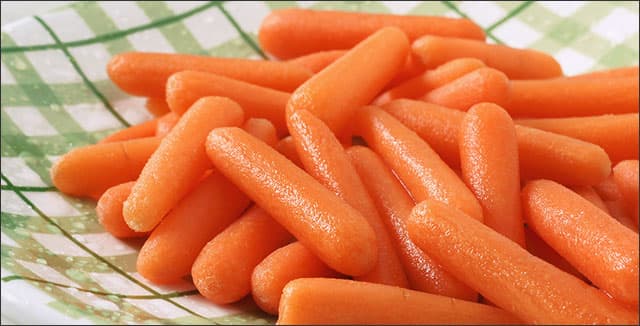
Baby carrots
Have We Lost Anything?
The baby carrot boom has resulted in a net gain for Americans. The average American eats three more pounds of carrots per year than before the baby carrot invention. It’s a fresh food option you can even get at McDonald’s.
One of the first things you will read about the baby carrot is that they are bleached. Like all ready-to-eat vegetables you find, they are washed in a mild bleach solution and then rinsed. This is to kill food-borne bacteria before it hits your mouth.
Baby carrots have also made this segment of farming more profitable in an industry that is anything but lucrative. These miniature versions of the carrot dominate half of the fresh-cut vegetable market well ahead of celery and potatoes.
However, are so-called “baby cuts” just as healthy as their more robust counterparts? And what, if anything, have we lost over the years as uniformity and convenience have come to be prized above nutritional value?
Carrot Nutrients
Studies show that baby cuts and full-grown carrots have a different nutrient profile.
Baby carrots are less nutrient-dense, fuller of water, and higher in folate. They have less iron, less phosphorus, and less magnesium. They also contain less vitamin C and vitamin A.
Have you ever wondered how carrots supply this vitamin A to your body? It’s through the anti-oxidant beta-carotene, which your body converts into vitamin A.
Beta-carotene is also a potent cancer-fighting compound. There is scientific evidence to show that cutting or cooking carrots increases the bioavailability of these healthy compounds to your body.
The bleach wash for baby carrots isn’t all that toxic by itself. However, when bleach interacts with organic matter, it produces disinfection byproducts DBPs, like trihalomethanes and haloacetic acids. Even when you buy organic baby carrots, they have been washed in bleach and produced these toxins.
We have also lost plenty of nutrients just by throwing away those leafy tops. In your average supermarket, you can’t even find carrots with tops. But they are delicious, safe to eat, and they contain six times more vitamin C than the root.
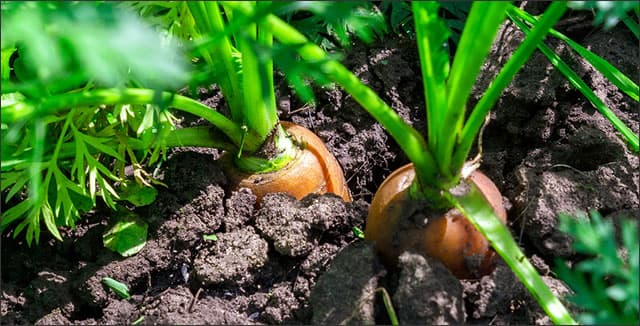
Growing Your Own Carrots
Baby carrots would be challenging to pass up altogether. They are a staple at gatherings and parties, and in kids’ lunches. They make it easier to say no to much less healthy junk food in situations like this.
But if you want to increase the nutrient density in your afternoon salad or your kids’ lunch, you can opt for organic whole carrots that you peel and chop yourself. This way, you pass up those harmful DBPs.
You can also take another step forward and grow your own carrots. There are many varieties in so many shapes, sizes, and colors. There are carrots suitable for container gardening – even carrots that grow into 1-2 inches long!
Additionally, you can take a cue from carrot farmers everywhere and harvest them in their baby stage. You will never taste anything half so good from the supermarket as a home-grown carrot.
Favorite Carrot Varieties
Imperator 58
The classic heirloom variety, popular since 1933, when it won the All-American Selections award.
Tendersweet
Another 1930s heirloom variety that has no core and is perfect for every carrot application.
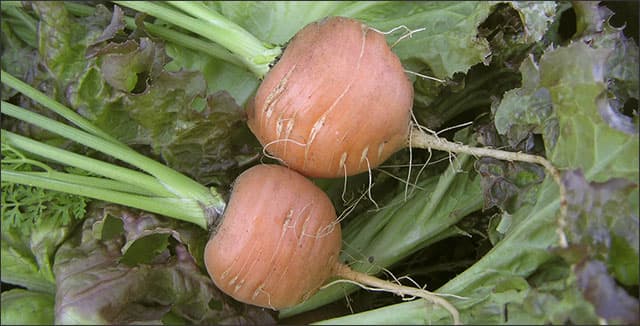
Thumbelina carrot
Container Garden Carrots
For container gardening, the try the following varieties.
Short ‘n Sweet
This Chantenay type carrot grows four-inch roots perfect for small pots or heavy soil
Thumbelina
This All-American Selections winner from 1992 produces roots that are 1-2 inches, very sweet, and ready to eat without peeling.
Touchon
Or you can plant this sweet variety, which matures quickly, and harvest them a little early.
Little Fingers
Another quickly-maturing variety that can be grown quite densely.
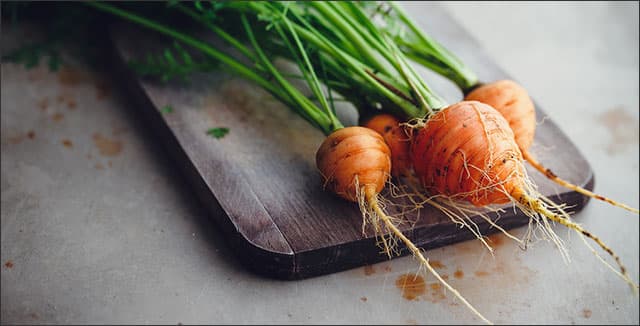
Parisian Heirloom carrot
Exotic Carrots
For your exotic carrot needs, take a look at these:
- Deep Purple Hybrid
- Kaleidoscope
- Lunar White
- Parisian Heirloom
- Purple Dragon
- Red
- Solar Yellow
- Tendersweet
Bringing it Home
Baby carrots are a more ideal snack food than French fries or Twinkies. In addition, they almost single-handedly saved the carrot farming industry, producing far less waste than the ugly carrots farmers couldn’t sell.
However, they don’t pack the same nutritional punch. Moreover, they contain more potentially harmful compounds than their unwashed organic counterparts because of the bleach used to wash them.
Either way, those powerful anti-oxidants are yours to enjoy!




Reading this makes me want to try growing my own carrots (and tomatoes) in our tiny back yard. We just moved into our little town house and have a bandaid size yard that I imagine could sustain a pint-size carrot/tomato grow-op? I can’t say for sure, as I’ve never had a garden before, but I’d like to give it a go. So, I think that’s exactly what I’m going to do. I just need to learn how.
Hi Phil,
I’m glad to hear you found this post about carrots helpful and that it has inspired you to start a garden. Best of success!
~ Jeff